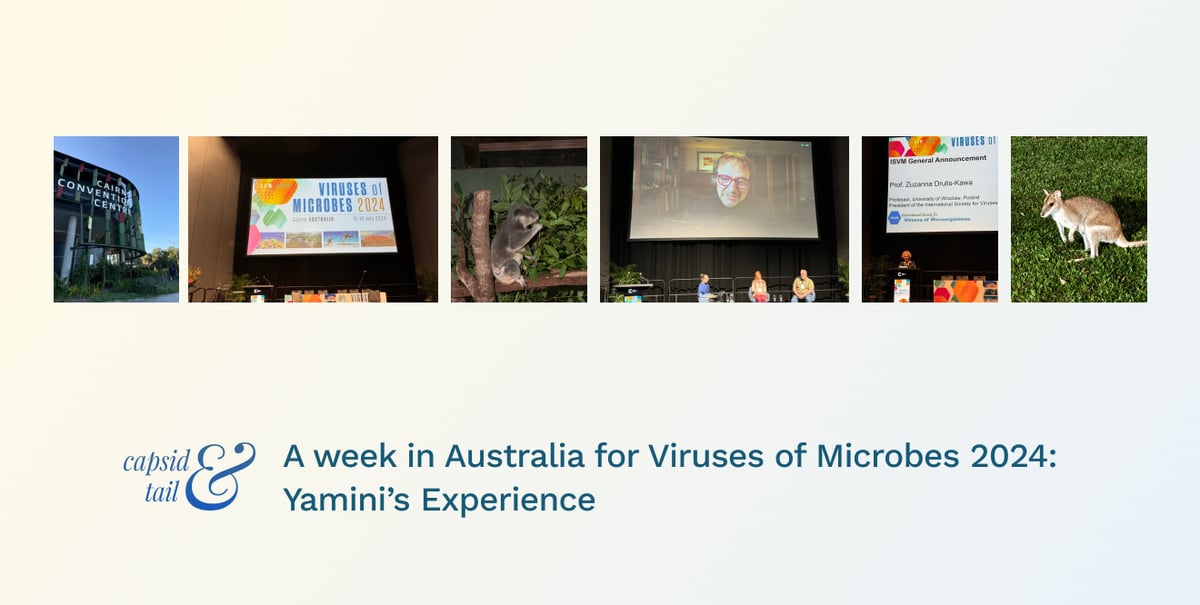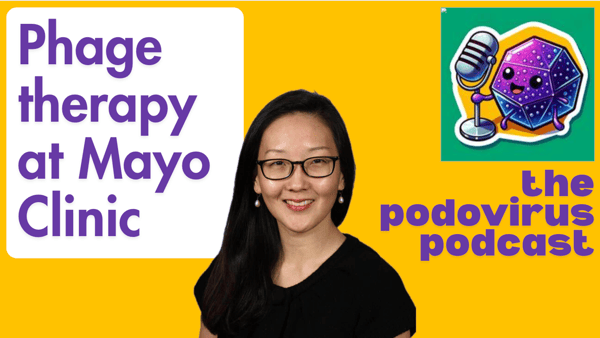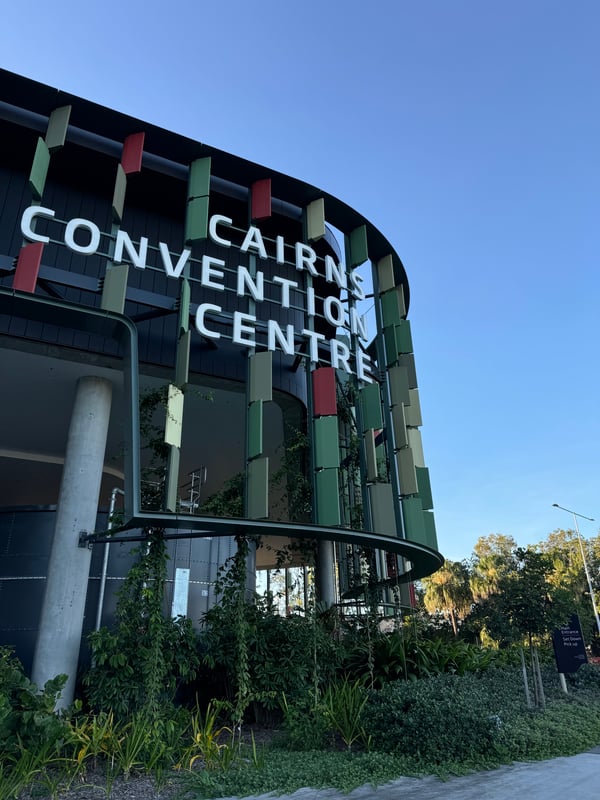
Attending the recent Viruses of Microbes Conference in Australia was a truly transformative experience. As an undergraduate student, I had a very unique opportunity to engage with some of the brightest minds in the field, including PhD students and postdocs, deans, and department chairs. The conference served as an invaluable platform for discussing the latest advancements in virology, with a particular focus on the intricate relationships between viruses and their microbial hosts. This gathering not only deepened my understanding of the subject but also provided crucial insights into how our planned healthcare software can address the pressing needs of researchers and students worldwide.
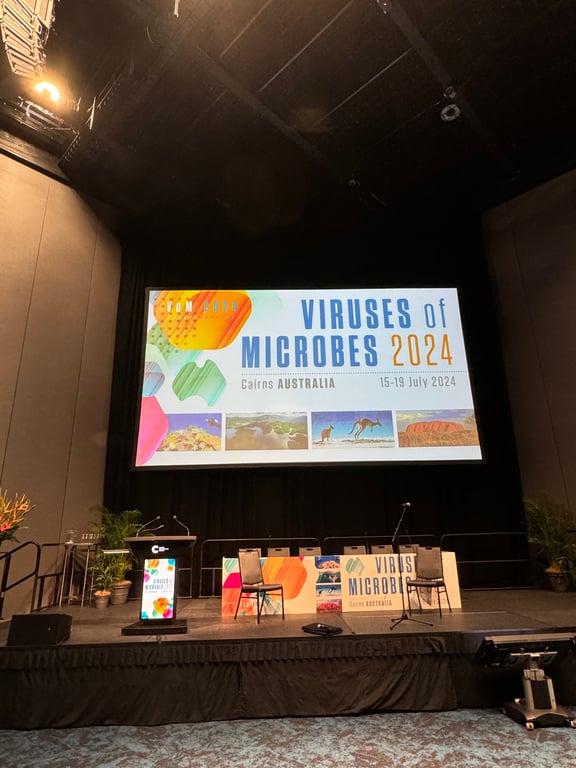
Day 1: Traditional Welcomes and Groundbreaking Science
Day 1 of the Viruses of Microbes 2024 Conference in Cairns was nothing short of extraordinary! I had the privilege of meeting Rob Lavigne, a leading figure in bacteriophage therapy, who shared his experiences with P.H.A.G.E., a European non-profit addressing regulatory issues. He discussed their work with Belgian government officials to streamline phage therapy approvals and the current challenges in Good Manufacturing Practice (GMP) compliance. Prof. Colin Hill’s keynote redefined our understanding of bacteria and phages as partners, using the crAssphage in the human gut as a prime example. Dr. Jill Banfield’s talk explored microbial communities in wetlands, revealing the genetic code-switching of Lak phages and DNA Borgs’ role in methane metabolism. The day was rounded off with a warm welcome from the local Cairns community, featuring traditional dance and sharing their rich history, setting a vibrant tone for the conference.
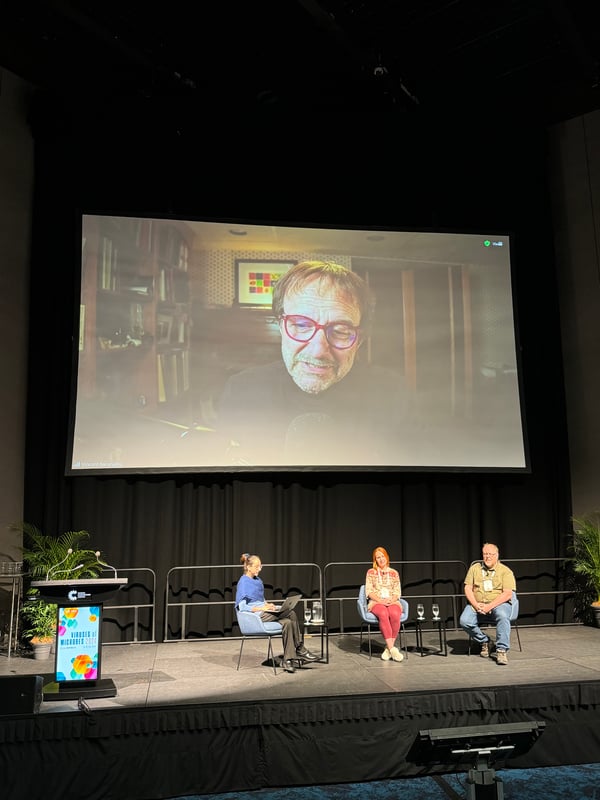
Day 2: Diving Deep into Virus-Host Interactions
Morning Sessions: Frontiers in Phage Biology
Professor Joe Pogliano’s groundbreaking presentation on phage biology from UCSD unveiled new dimensions in phage nucleus and cytoskeleton dynamics, capsid trafficking, and phage maturation, captivating the audience with insights into Pseudomonas nucleus-forming phages and their therapeutic potential. Laura Avellaneda Franco from Jeremy Barr’s lab illuminated the critical role of prophages in the gut ecosystem, emphasizing their impact on bacterial metabolism and human health. Bálint Kintes highlighted the importance of genomic surveillance in designing effective phage cocktails, particularly for tackling CRAB infections. Jolene Ramsey from Texas A&M University concluded the day with a deep dive into phage N4’s molecular mechanisms, providing profound insights into phage-host cell interactions.
Early Career Researchers: Tomorrow’s Leaders Today
The Early Career Researcher (ECR) sessions were equally electrifying, showcasing innovative research from emerging scientists. Dr. Fernando Gordillo Altamirano explored phage therapy challenges in cystic fibrosis patients, while Somavally Dalvi delved into the life cycle of enveloped phages. Susie Grigson introduced computational tools like AlphaFold for predicting phage protein structures, advancing our understanding of phage biology. Angela Hickey revealed the complexities of the human gut phageome through long-read sequencing, and Dr. Leighton Payne’s work on bacterial immune defenses presented PADLOC, a tool for identifying antiviral defense systems. Tatiana Borodovich’s research on capsid-mediated horizontal gene transfer underscored the role of genetic exchange in microbial adaptability and health.
Bioinformatics Breakthroughs: Tools Shaping the Future
Our exploration of bioinformatics at the conference showcased transformative advancements in viral and microbial research. Vijini Mallawaarachchi’s presentation on Phables, a tool revolutionizing the analysis of complete bacteriophage genomes from metagenomes, highlighted its crucial role in uncovering novel phages and understanding their ecological impacts. Ryan Cook delved into the complexities of viromics, emphasizing both the strides in bacteriophage genomics and the persistent challenges in accurately interpreting viral data. Richard Allen White III introduced MetaCerberus, a highly parallelized HMM-based tool for robust functional annotation across the Tree of Life, underscoring its potential to revolutionize bioinformatics. Finally, Rob Edwards discussed innovative computational techniques and synthetic phage construction, expanding our capabilities in viral genome identification and annotation.
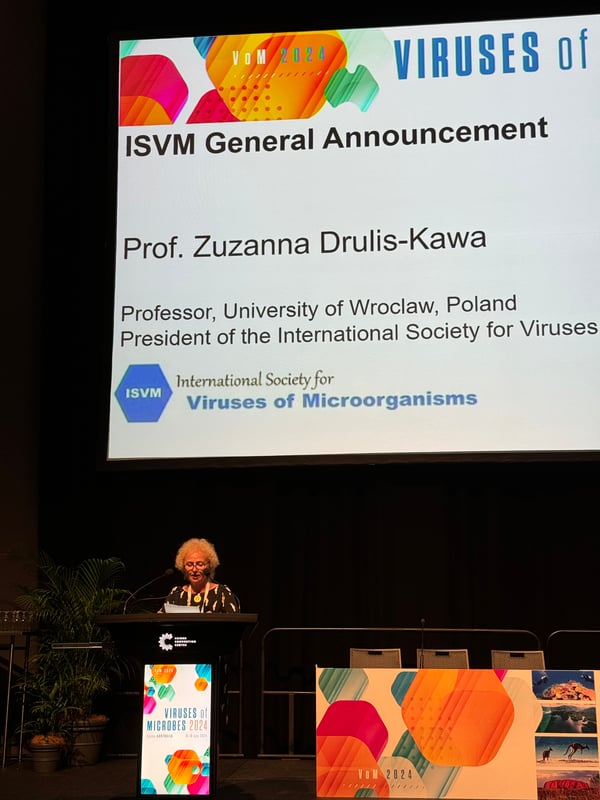
Day 3: Where Science Meets Media
Morning Highlight: ISVM General Assembly and TWiV Live
Day 3 of the Viruses of Microbes 2024 Conference surprised and delighted us, with the privilege of attending the ISVM General Assembly and a live telecast of the “This Week in Virology” podcast. The General Assembly offered a fascinating overview of the International Society of Viruses and Microbes, highlighting how the organization supports researchers with numerous perks and upcoming events designed to foster collaboration and innovation. The excitement peaked during the podcast session, where Vincent Racaniello and Jolene Ramsey engaged Rob Lavigne and Krystyna Dabrowska in a riveting discussion on phage therapy and antibiotics.
Afternoon Deep Dive: Viral Ecology and Environmental Impact
The day kicked off with Debbie Lindell’s fascinating study on cyanophages in the North Pacific, revealing how these viruses shape marine ecosystems and drive microbial diversity. Dr. Yogesh Hooda introduced an innovative phage surveillance approach in Bangladesh to monitor Salmonella typhi, addressing the global challenge of tracking typhoid fever. He explored the impact of hydrocarbons on marine sediments, uncovering a wide distribution of viral clusters across different zones. Dr. Yusuke Okazaki then highlighted the dynamic virus-host interactions in freshwater environments, using single-cell genomics to reveal how bacterial strategies influence viral co-dominance. Matthias Fischer’s exploration of marine chlorarachniophyte algae shed light on underexplored antiviral defense systems, while Maria Erazo-Garcia uncovered significant viral sequences in unicellular eukaryotes. Tomás Alarcón-Schumacher’s work on archaeon Haloferax volcanii revealed how HFPV-1 infection disrupts cell motility, and Ying Li proposed a new model to understand archaeal viruses in extreme conditions.
Evening Sessions: Bacterial Immunity and Host Interactions
Professor Peter Fineran’s exploration of phage-countering bacterial defenses like CRISPR-Cas set the stage, revealing the delicate dance between phage anti-CRISPR mechanisms and bacterial responses. Gipsi Lima-Mendez introduced ADAM, a revolutionary tool for discovering hidden antiviral mechanisms within mobile genetic elements, while Pedro Leão traced the ancient evolutionary roots of eukaryotic immune strategies back to their prokaryotic origins. Yuping Li’s unveiling of the JuK system—a novel bacterial defense against jumbo phages—offered fresh insights into bacterial immunity’s potential in biotechnology. The excitement continued in the virus-host interaction session, where Emily Armbruster captivated with her findings on phage genome compartmentalization, and Ivan Liachko introduced a groundbreaking approach to understanding phage-host dynamics through Proximity-Guided Metagenome Assembly. Elina Laanto’s study on megaphages carrying CRISPR systems and Andrew Hryckowian’s research on CrAss-like phages’ influence on the gut microbiome highlighted the profound impact of phages on health and disease.
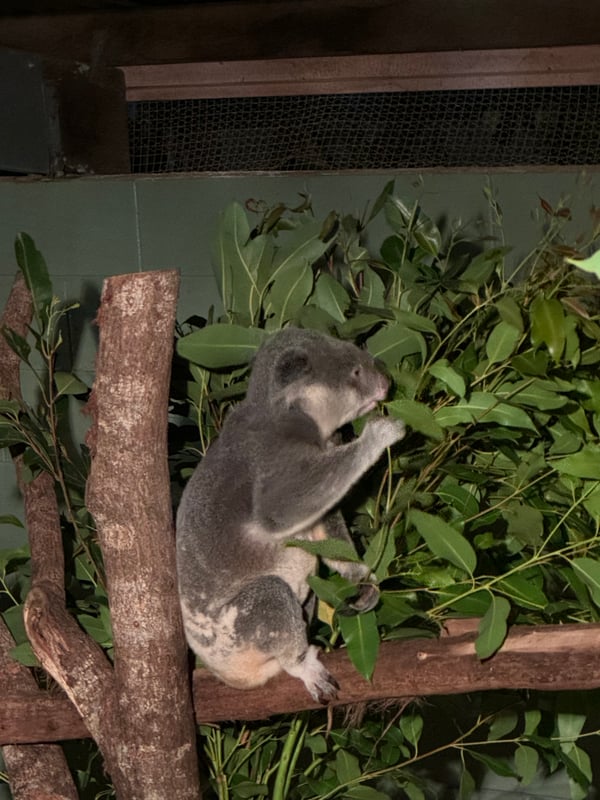
Day 4: The Future of Phage Therapy
Morning Sessions: Clinical Breakthroughs
Day 4 kicked off with a bang as Dinesh Subedi unveiled “Entelli-02,” a revolutionary phage product for nosocomial infections that promises dual-target precision and stunning in vivo results. Anett Kristin Larsen took us deep into the body’s phage clearance mechanism, revealing the pivotal role of liver sinusoidal cells. Austen Terwilliger then wowed the crowd with his game-changing approach to personalized, on-demand phage therapy, a leap towards cost-effective and rapid treatment solutions. Luciana Meneses followed with breakthroughs in combating Pseudomonas aeruginosa biofilms, a huge win for cystic fibrosis patients.
Afternoon Focus: From Lab to Clinic
The excitement carried over into the research session, where Jon Iredell introduced the STAMP protocol, transforming how clinical trials are conducted. Dana Stverakova showcased impressive results from the Duofag trial, targeting tough bacterial foes with laser precision. Steven Branston highlighted his team’s strides in phage production, ensuring smooth transitions from lab to clinic. Mzia Kutateladze’s review of the Eliava Phage Therapy Center’s global impact underscored the transformative power of phages in battling AMR. Holly Sinclair wrapped up with an inspiring look at how STAMP is revolutionizing patient care. The ESGNTA panel discussion illuminated the crossroads of phage therapy’s future, from balancing potential with practical challenges to navigating regulatory landscapes. The final session on microbiome science, featuring Ivan Zheludev’s discovery of “Obelisk RNAs,” Lianmin Chen’s visionary use of phages as gene-delivery vehicles, and Bryan Hsu’s bold prophage therapy concept, left us buzzing with anticipation for the revolutionary changes ahead.
Final Day: Evolution, Synthetic Biology, and Future Horizons
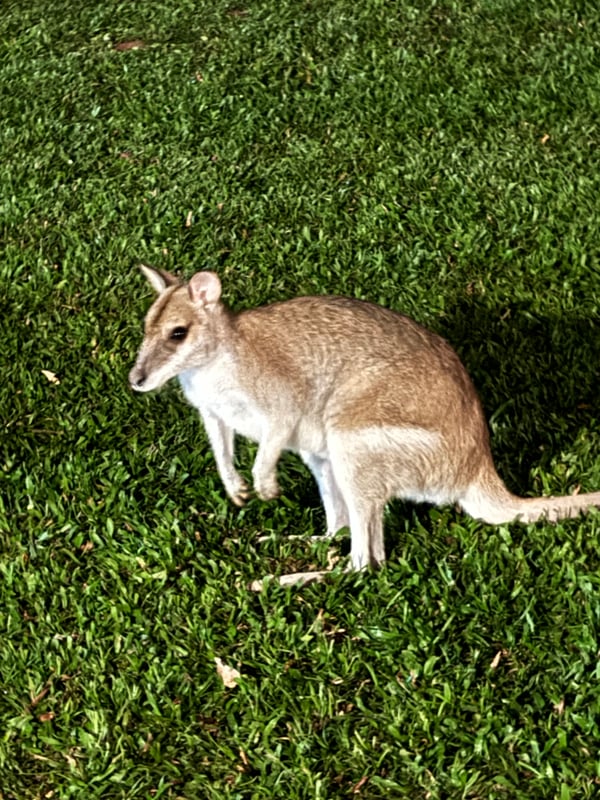
As the final day unfolded, Ann Gregory kicked things off by unraveling the intricate world of viral predation guilds in the human gut, offering fresh insights into how viral species evolve and interact in this rich ecosystem. From the groundbreaking revelations on viral microdiversity to John Chen’s deep dive into how SaPIs give prophages a competitive edge, each presentation was a thrilling glimpse into the future of viral evolution. The momentum continued with Jason Gill’s novel repressor class discovery for temperate T7-like phages, and Carola Venturini’s comparative analysis of E. coli responses in vitro and in vivo, both sparking new ideas for optimizing phage therapies.
The day’s finale, focused on synthetic biology, was nothing short of revolutionary. Dr. Vivek Mutalik’s “Phage Foundry” platform had the audience buzzing with possibilities for rapidly countering drug-resistant pathogens, while Susie Warring’s chimeric endolysins promised to reshape agricultural biotechnology. Ben Adler and Brady Cress’s CRISPRi technology and Yu Heng Lau’s engineering of encapsulin particles opened new frontiers in phage applications, from targeted therapy to molecular machines. Capping off the day with a stunning presentation from Rotem Sorek on bacterial immunity, the conference closed on a high note, leaving attendees inspired and ready to drive the next wave of innovation in microbiology and phage research!
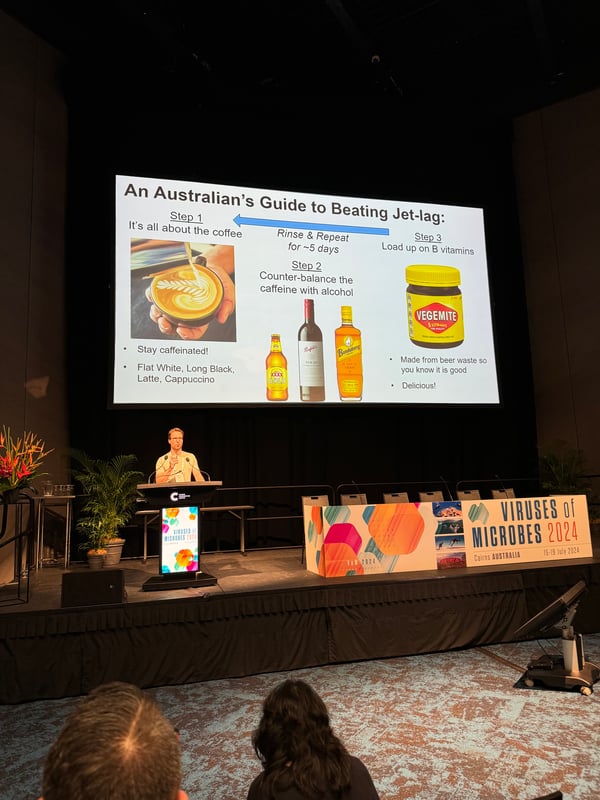
Closing Thoughts: A New Chapter in Microbiology
The Viruses of Microbes 2024 Conference has been an extraordinary journey, brimming with groundbreaking discoveries and visionary ideas that have redefined the future of microbiology. From the pioneering advancements in phage therapy to the thrilling explorations of viral evolution, synthetic biology, and bacterial immunity, each session illuminated the path forward in the fight against antimicrobial resistance and chronic infections. The spirit of collaboration and innovation that permeated every presentation, panel, and discussion was nothing short of inspiring. As the conference draws to a close, it’s clear that the future of microbiology is not only bright but also brimming with possibilities that could revolutionize both healthcare and biotechnology. The knowledge shared and the connections made here will undoubtedly fuel the next wave of scientific breakthroughs, pushing the boundaries of what’s possible in the world of microbes.
I would like to extend my appreciation to International Society of Viruses and Microbes for organizing this amazing international conference.

